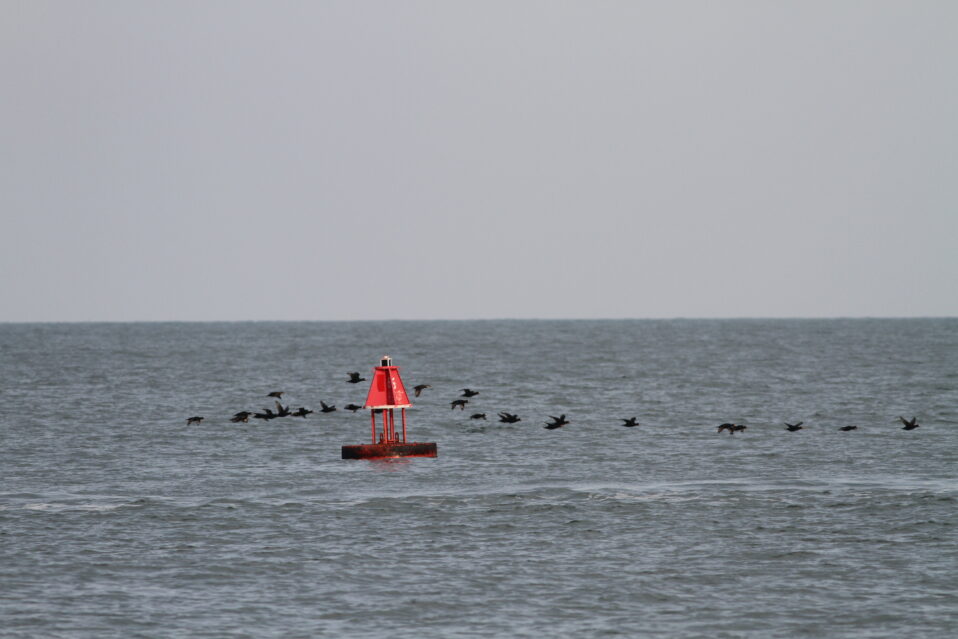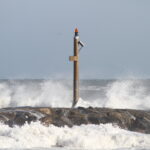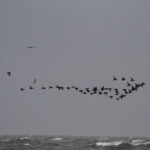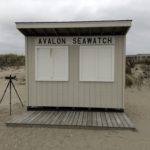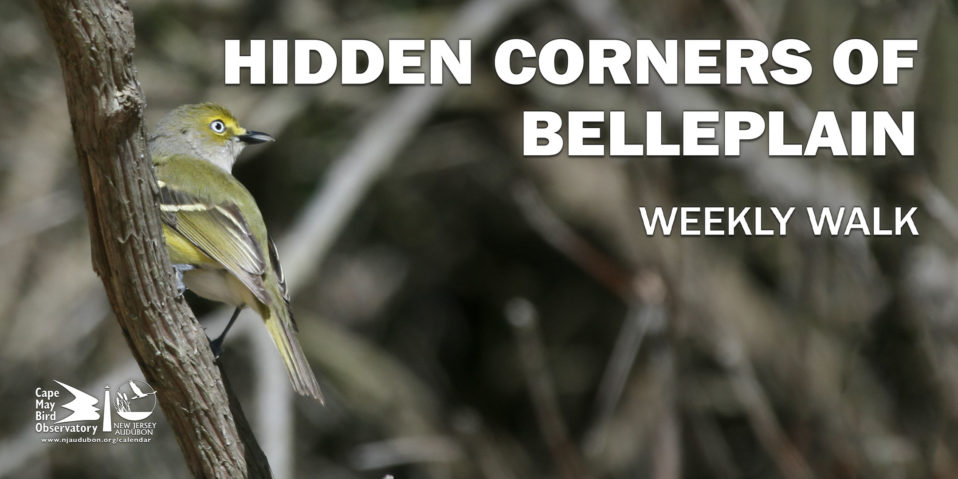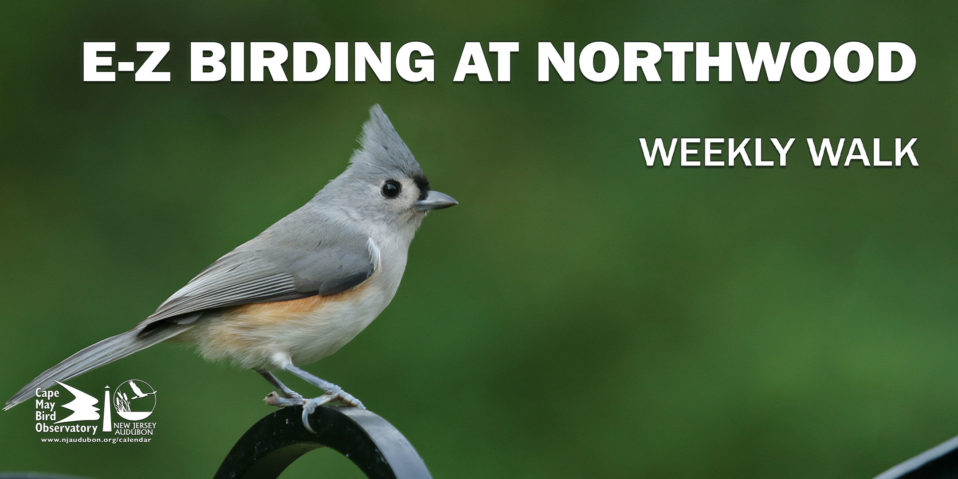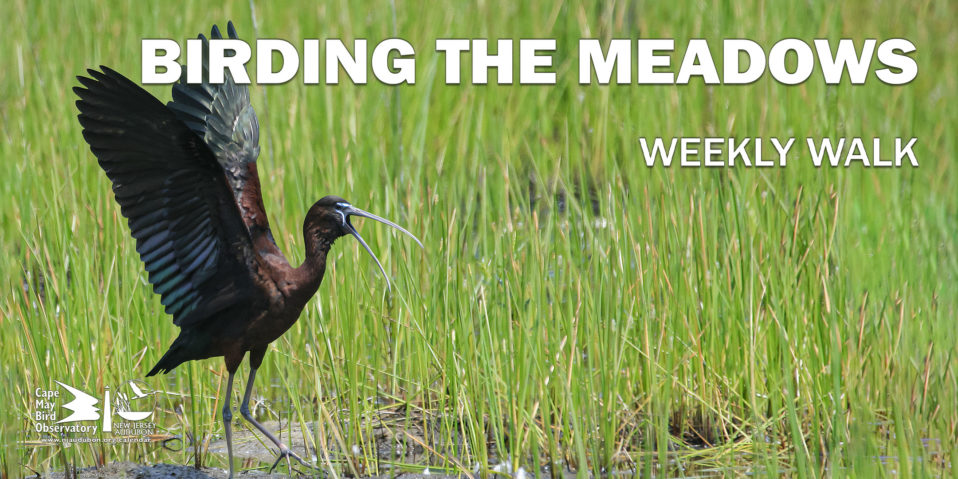A flock of southbound Black Scoters going by the Six Buoy.
Here’s a two-week summary of what’s been happening at the Seawatch!
These weeks were dominated by westerly winds and cold temperatures in the 30s and 40s. These cold mornings produced difficult viewing conditions caused by the heat haze due to the water and air temperature differences. Luckily conditions always steadily improved throughout the day as the temperature increased and the sun moved to the west. A few days of southwest winds provided nice temperatures in the 50s and excellent visibility, but they were the minority of days.
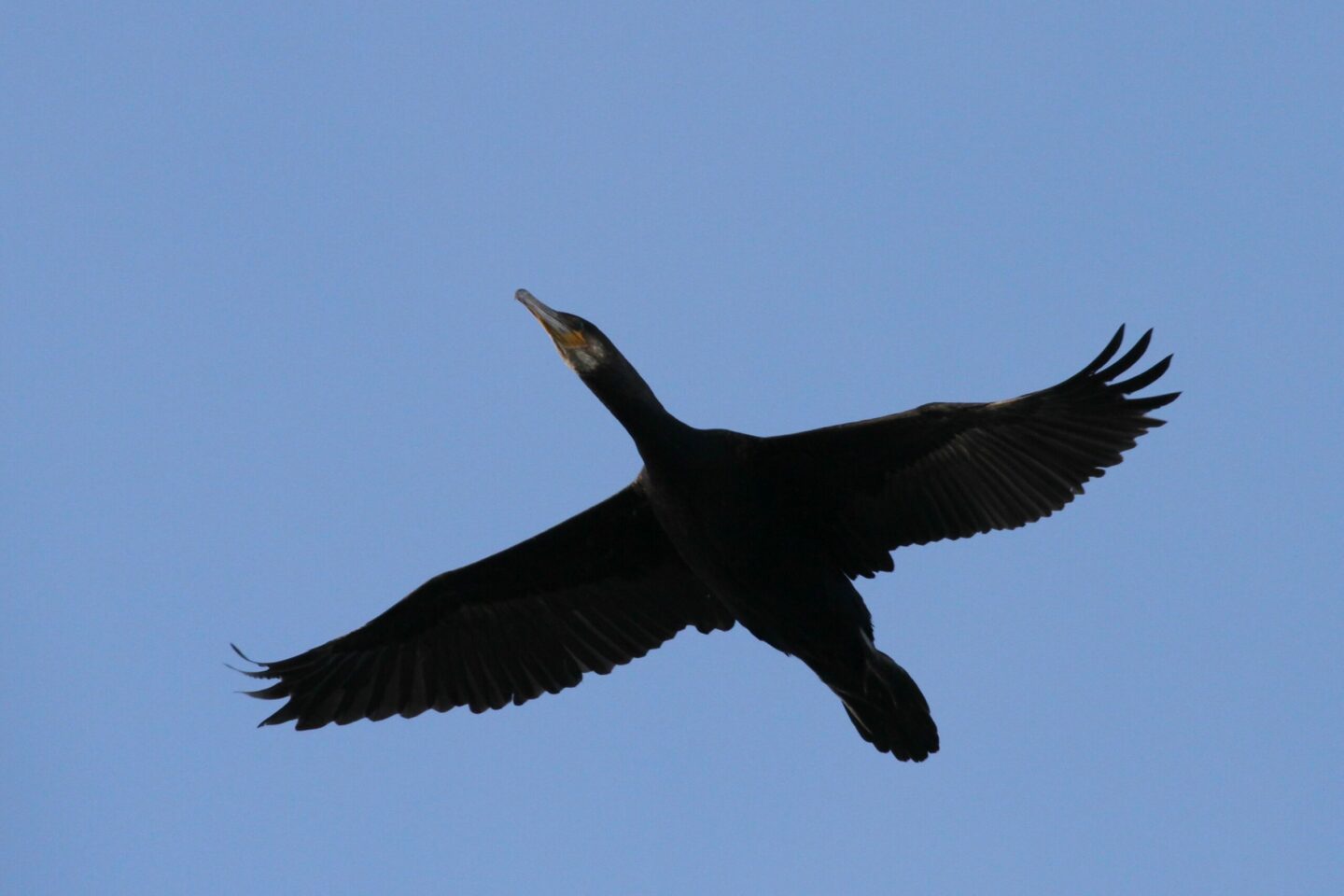
As November ends and December begins, overall numbers tend to decrease, sometimes dramatically on certain days. However, the end of November always provides our peak Red-throated Loon flights; this year that occurred on Saturday the 23rd with 5319. However, this is quite low for a peak flight, with both my previous years’ having 9861 and 8236 peaks, respectively. And the peak count ever was 16,851 on November 21st, 2011!
In addition to our loon flight, we had some excellent flights this week, such as 21 Horned Grebes on 11/19, a late flight of Laughing Gulls with 1306 on 11/26, and 24 Redhead on 12/1.
Rarities for the week included: King Eider (2), Harlequin Duck (8), Red-necked Grebe (3), Pomarine Jaeger (2), Ruddy Duck, Razorbill (12), Red Phalarope, Black-legged Kittiwake (2), and Marbled Godwit (10).
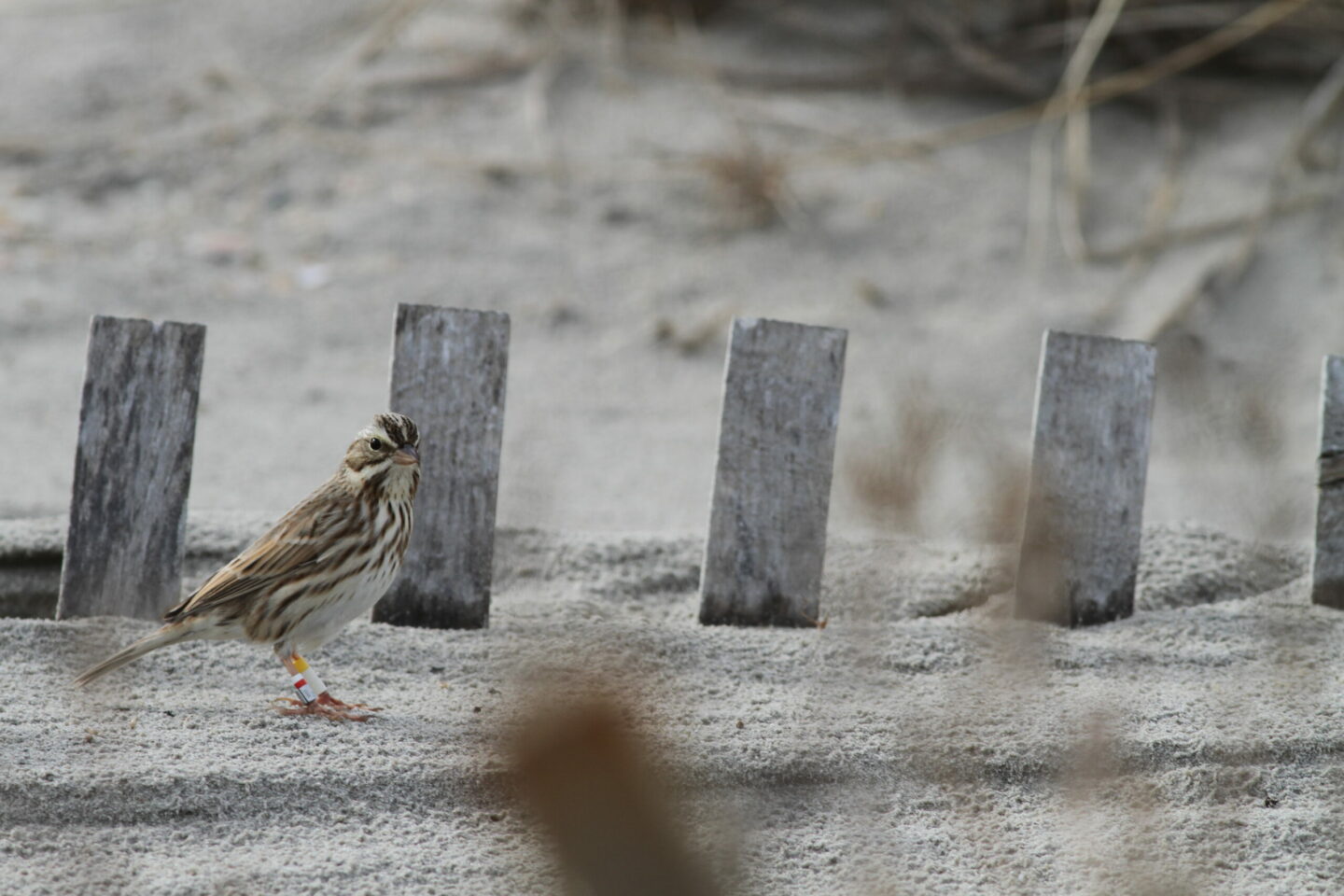
Of additional significance, the same banded Ipswich Sparrow from last year has returned to assert its dominance over the local House Sparrows at our bird seed. This bird was a first-year bird last year, and we’re happy to see that it’s survived and returned!
Stay tuned for the three weeks of the Seawatch (and hopefully plenty of Razorbills like last year)!
-David




